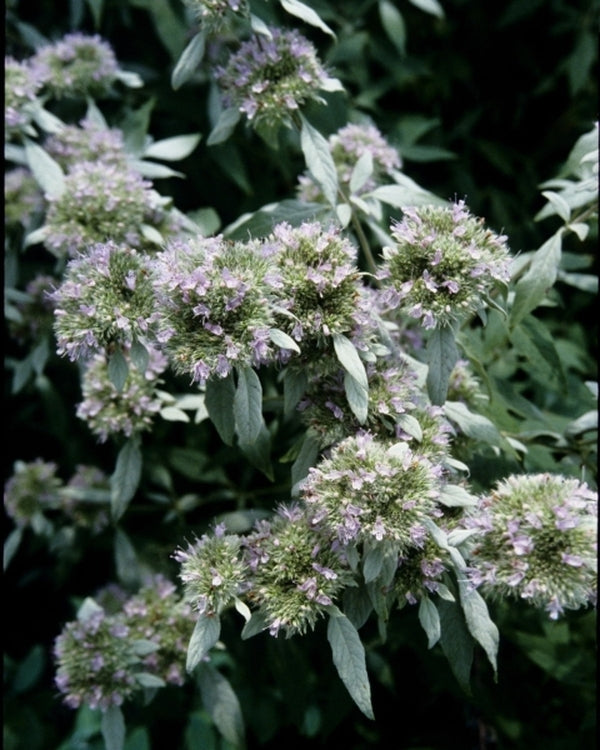Pycnanthemum 'Eagle Rock'
Clumping Mountain Mint
This plant is not currently for sale. This is an archive page preserved for informational use.
Shop Available PycnanthemumItem #: 5297
Zones: 6a to 8b, at least
Dormancy: Winter
Height: 36" tall
Origin: United States
Pot Size: 3.5" pot (24 fl. oz/0.7 L)
(coll. A1VA-012) They said it didn't exist, but we've found it...a clumping mountain mint. I love pycnanthemum, but hate its habit of taking over the garden, so I was thrilled when I found this specimen near Eagle Rock, Virginia, growing in an area of degraded rock known as the shale barrens. P. 'Eagle Rock' has been fabulous in our garden, making a 3' tall x 3' wide clump of peppermint-smelling, grey-green foliage. In early July, the clumps are topped with small but attractive sprays of tiny pink flowers that the pollinating insects must find as an aphrodisiac. Good drainage is best for this and most shale barren plants.
Maintenance:
Cut last year's stems to the ground before new growth starts in spring, or whenever they get shabby or you tire of their presence. Generally the seed heads remain attractive all winter like a great multitude of tiny Sedum 'Herbstfreude' (Autumn Joy) heads. This is all it requires in the way of maintenance.
Of the 20 species of Pycnanthemum, some are clump forming, others are spreading. The clump forming species are suitable even to a small sunny garden. The spreading Mountain Mints are perhaps better suited to larger gardens where larger masses of ground covering plants are desired.
Growing Conditions:
Sun to part sun is best both for flowering and the pollinators which flock to the flowers. Well drained soil is essential for Pycnanthemum 'Eagle Rock'. Other pycnanthemum prefer average soil conditions.
Garden Value:
The Mountain Mints are superb supporters of a wide range of pollinating insects, especially so for many species are in bloom for several months. Beyond the importance of supporting pollinators there is the shear joy and entertainment of watching a wide range of insects working these flowers; a veritable Serengeti Plains in a few square feet of ones garden. They are attractive in bloom as well as in their winter forms and are usually avoided by deer and rabbits.
Natural Impact:
Include in any sunny garden where one hopes to support pollinating insects.

-
Other Attributes


